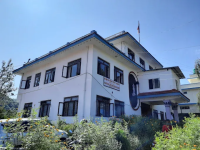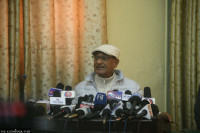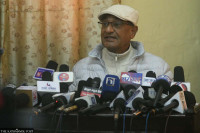National
Nepal and India agree on energy banking
Nepal and India have agreed to sign an energy banking deal that will prevent the spilling of electricity generated in the country when the production is higher than the demand.
Bibek Subedi
Nepal and India have agreed to set up an energy banking mechanism that will prevent spilling of electricity generated in the country when production surpasses demand, a situation the domestic energy sector is expected to face in a few years’ time.
Energy banking involves exchanging electricity for electricity instead of cash. Under this mechanism, one country exports electricity to the other when it has a surplus, and imports back the same amount of energy when it has a deficit.
Nepal Electricity Authority (NEA), the state-owned power utility, and Central Electricity Authority (CEA) of India on Wednesday agreed to the draft of the guidelines on power exchange. The draft will be presented for approval before the energy secretary-level joint steering committee (JSC) meeting scheduled to be held in January.
“This agreement is a milestone in the country’s energy sector as it will secure the market for the surplus energy we are on track to produce within a few years,” said NEA Managing Director Kulman Ghising, without sharing the details of the draft.
“We will supply electricity to India during the wet season when the domestic output is high and import it back during the winter when domestic production is much lower than the demand.”
Nepal had long been advocating energy banking saying that seasonal complementarities of demand and supply of electricity in Nepal and India will make the mechanism a suitable model of power transfer. As a majority of power plants in Nepal are run-of-the-river type, they generate a large amount of electricity during monsoon. The surplus coincides with a sharp rise in demand for electricity in the Indian states of Uttar Pradesh, Haryana and Punjab due to increased power consumption in the farm sector.
Electricity generation in Nepal drops by more than 50 percent in winter due to low discharge in the snow-fed rivers, making power import from India inevitable.
Indian officials present in the meeting were also positive about Nepal’s proposal on the operational modality of the new Butwal Gorakhpur Cross-Border Transmission Line Project.
“We told our Indian counterparts that we will use the power line to import electricity for initial 5 to 7 years and then use it for export,” said Prabal Adhikari, chief of the power trading department of the NEA, who attended the meeting. “Indian officials were positive about our proposal.”
Based on the proposed operational modality, the upcoming meeting will decide how funds will be arranged for construction of the power line.
Meanwhile, a separate meeting of the Nepal-India power exchange committee—headed by NEA chief Ghising and CEA head Prakash Maskey—decided not to increase the price of electricity that Nepal is importing from India.
“As the Indian government has recently introduced the guidelines on cross-border electricity trade, we convinced our counterparts to continue with the existing tariffs until the new guidelines take effect,” said Adhikari.




 14.12°C Kathmandu
14.12°C Kathmandu













%20(1).jpg&w=300&height=200)

